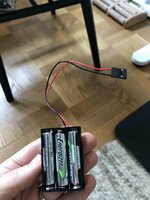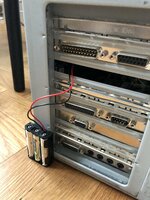I was recently given a 386 for free that had been used as a phone and fax switch at a local theater for decades, but had been decommissioned at some point and was gathering dust in a corner.
It's a late-era 'industrial' 386 with IC date codes from 1995, and I was able to extract the PMOS battery just as it had started to leak, so no nasty nicad gunk had made it to the PCB luckily.
Now, I have read up on the simple circuitry that you have to build with a diode to be able to use a regular lithium barrel or CR2032 batteries in place of another little nicad bomb. However, before building one myself, I wanted to check with the community if someone knows of an off-the-shelf product that you can just drop in on any PC motherboard that expects 3.6V?
It's a late-era 'industrial' 386 with IC date codes from 1995, and I was able to extract the PMOS battery just as it had started to leak, so no nasty nicad gunk had made it to the PCB luckily.
Now, I have read up on the simple circuitry that you have to build with a diode to be able to use a regular lithium barrel or CR2032 batteries in place of another little nicad bomb. However, before building one myself, I wanted to check with the community if someone knows of an off-the-shelf product that you can just drop in on any PC motherboard that expects 3.6V?


